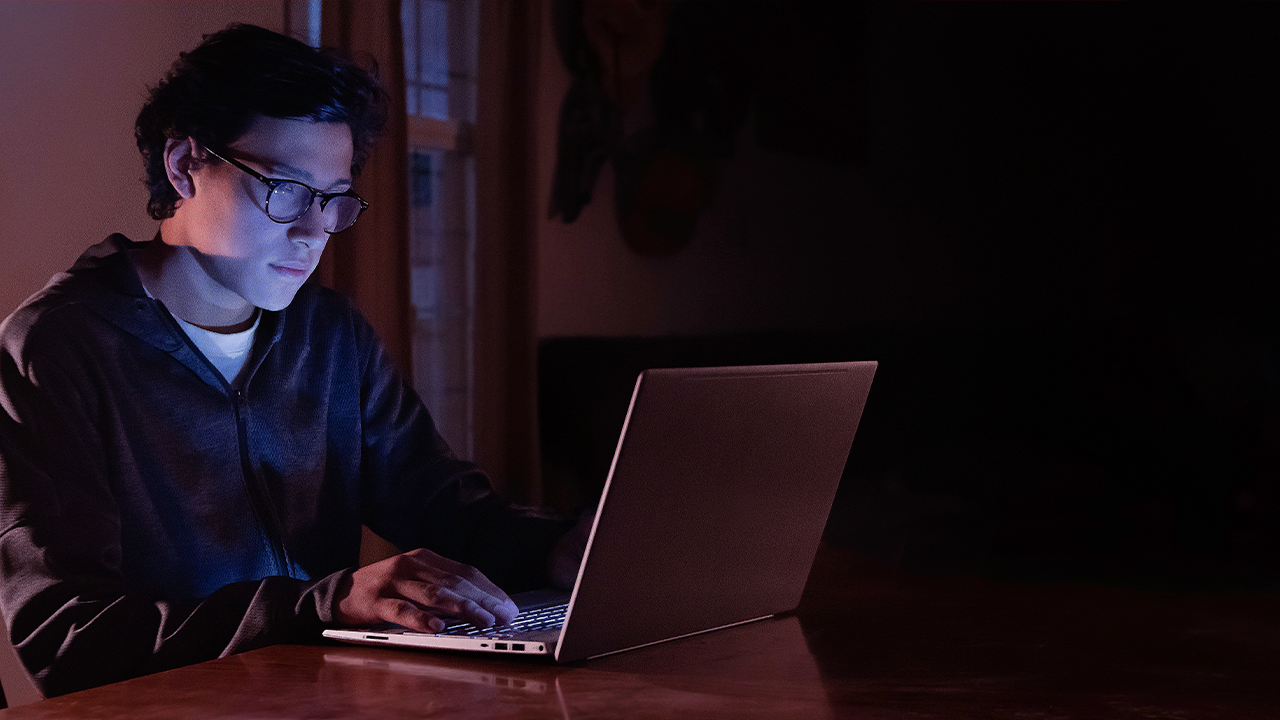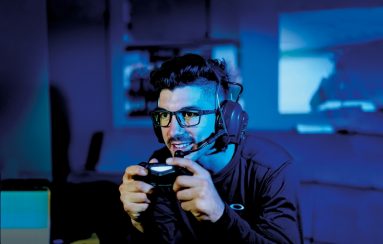If you've ever done a quick Google search for, "What is blue light?," then you've encountered the following:
- images of people hovering over cell phones with bright blue light illuminating their faces (much like the one above)
- colorful spectrums of visible light with no shortage of lines and text
- article headlines featuring the word "heath" alongside "bad," "risk," and "problems"
But what does all of this actually mean? What IS blue light? How does it work? Why is it so bad for your eye health? And what about that one article saying that there is good blue light?
At SportRx, we're no stranger to these questions. In fact, it is one of the most popular topics our opticians encounter. That's why we decided to clear the air and demystify the buzz around blue light. Join us as we reveal the truth behind blue light lenses.
Table of Contents
1. Watch the Video
2. What Is Blue Light?
2.1. "Bad" Blue Light
2.2. "Good" Blue Light
3. Where Is Blue Light Found?
3.1. Artificial Sources
3.2. Natural Sources
4. How Do Blue Light Lenses Work?
5. Do All Blue Light Lenses Have a Yellow or Blue Tint?
6. Blue Light Glasses
7. Blue Light Sunglasses
8. Prescription Blue Light Glasses & Sunglasses Online
Watch the Video
Join Eyeglass Tyler as he breaks down everything you need to know about blue light lenses. Read on to learn more.
What Is Blue Light?
Remember that colorful spectrum we called out earlier? We're going to need one of those to explain.
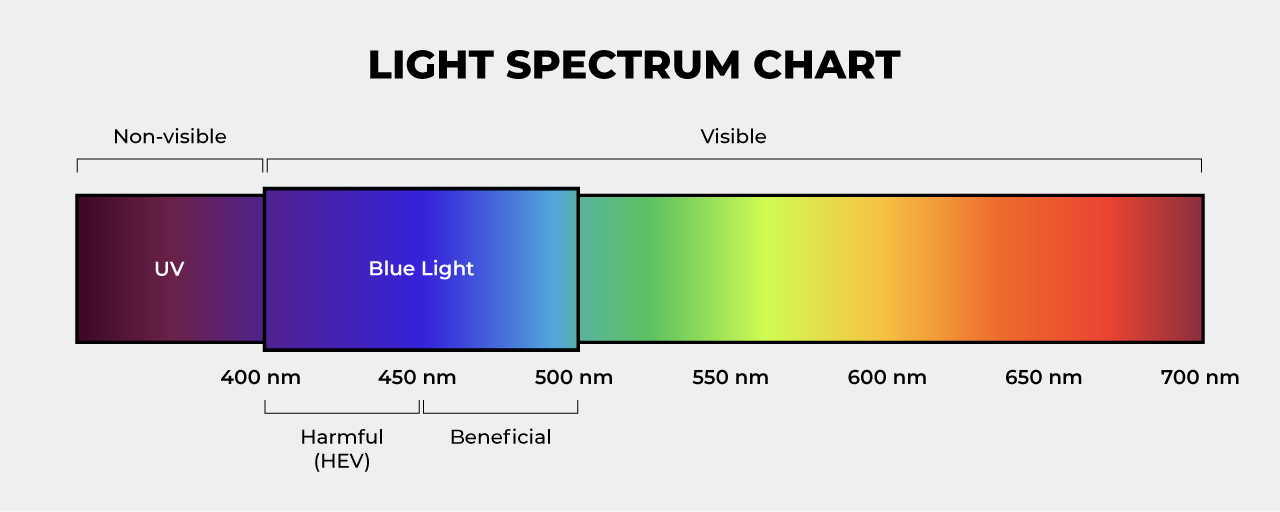
Here you have the light spectrum. To the far left, we have non-visible UV light. While we're already familiar with the risks associated with UV exposure to our eye health, harmful blue light is a more recently discovered threat.
Blue light exists within the range of 400–500 nanometers (nm) on the visible light spectrum. This range can be broken down further into two categories of "good" and "bad" blue light. For the purpose of understanding the harmful effects of blue light, we'll start by focusing on the latter.
"Bad" Blue Light
"Bad" blue light, otherwise known as high-energy visible (HEV) light, is found within 400–450nm on the visible light spectrum. This range of light is what optical companies focus on when developing blue light-blocking lens technologies. It is also within this range that we find the risks surrounding the integrity of one's vision, which we'll reveal below.
Macular Degeneration
Harmful blue light increases the risk of macular degeneration — one of the leading causes of vision loss. Defined by a deterioration of the retina's central area of vision, the macula, there is a gradual change in vision over time. Ultimately, this deterioration can result in irreversible, blurry vision.
While ongoing studies are determining the exact rate and extent of permanent vision loss from blue light exposure, there are more daily issues that can arise from too much blue light. Let's review these risks next.
Digital Eye Strain
It's the 21st century and there's no surprise that we're an era of digital-loving and frenzied tech users. We spend unprecedented amounts of time in front of digital screens — one of the biggest culprits of "bad" blue light — for work, play, or anything in between. Because this light is more easily scattered, our eyes have a more difficult time focusing.
It's proven that as we stare intently at our digital screens, we are much less prone to blinking. In fact, a research study by the University of Iowa Hospitals & Clinics, discovered that our blink rate is decreased by 66% when using a computer. This reduced rate, in conjunction with continued eye strain, quickly leads to eye fatigue, dry eye, and headaches.
Disruption to the Natural Sleep-Wake Cycle
Healthy exposure to natural blue light helps our body regulate its awake hours and the diminishment of blue light serves our sleep hours. Before the boom of light-emitting diode (LED) blue-light sources like mobile phones and laptops, the last exposure we would have to blue light was when the sun went down — nature's source of this light. Now, we have access to more unique sources of blue light during the day and night. Overexposure to blue light during and leading up to conventional sleep hours can disrupt our natural sleep-wake cycle and leave you up well beyond your regular hours.
Our recommendation? Avoid those late-night social media checks. Blue light emitted from your phone can make it harder to go back to sleep than had you simply counted sheep.
"Good" Blue Light
Ok, we've given blue light a pretty bad name. But not all blue light is created equal. Let us introduce you to "good" blue light.
"Good" blue light exists within the 450–500nm range of the visible-light spectrum. It helps boost alertness, improve reaction times, elevate moods, and increase the feeling of well-being. It also plays a significant role in our Circadian rhythm.— that disruption to our sleep cycle that we called out earlier. "Good" blue light helps in the regulation of a healthy sleep-wake cycle.
Overall, we want "good" blue light! That's why effective blue light lenses don't counteract this nanometer range. Blue light glasses and blue light sunglasses allow this range of light to reach your eyes, so you get the benefits of "good" blue light exposure.
Where Is Blue Light Found?
A common misconception about blue light is that it is only emitted from digital sources. When in fact, blue light is present everywhere. To understand exactly where blue light is found, we will break its sources into two categories: artificial and natural.
Artificial Sources
Most often, artificial blue light is associated with digital screens, but this light is also found in more inconspicuous items. The list below recaps the most common sources of artificial blue light.
- Smartphones
- Computers & Laptops
- Televisions
- Tablets
- LED & Fluorescent Lighting
- Stadium Lights
Artificial blue light is ever-present in our daily lives, but digital screens aren't the only culprit. In fact, nature is its greatest source.
Natural Sources
The sun is the greatest source of blue light. Often overlooked for its digital counterpart, natural blue light merits even more caution for eye health. According to a study done by Wiley X, "spending one hour outside on a normal overcast day exposes our eyes up to at least 30 times more blue light than spending one hour inside sitting in front of a screen."
To counteract the presence of blue light in both artificial and natural environments, we propose two categories of eyewear: blue light glasses and blue light sunglasses. Regardless of which you use, both approach blue light defense in the same manner. Let's review how blue light lenses work before visiting each of these eyewear categories.
How Do Blue Light Lenses Work?
Blue light defense is found in two formats: as a coating or built directly into the composition of the lens. Two examples of lens technologies that feature blue defense within the lens itself are Maui Jim Blue Light Protect and Oakley PRIZM™ Gaming.
Regardless of which format you choose, both act as a filter against harmful blue light. By actively blocking "bad" blue light, you'll take a proactive approach to protecting your eye health. Inversely, by allowing the "good" blue light through, you'll reap the benefits of the positive aspects of blue light that we reviewed earlier.
In summary, it's a filter. "Good" gets in, "Bad" gets the boot!
Do All Blue Light Lenses Have A Yellow or Blue Tint?
The short answer: No.
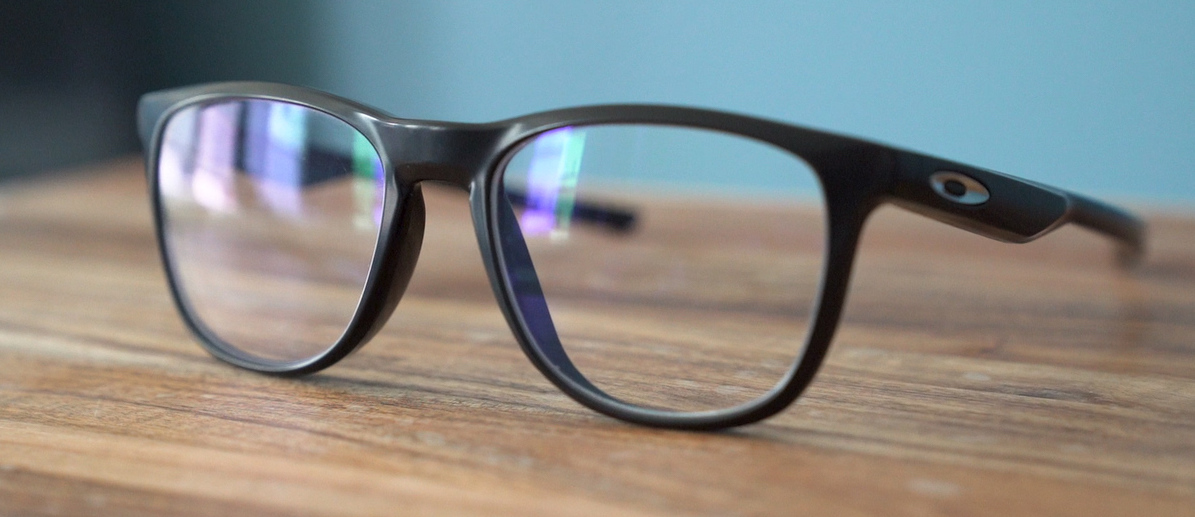
Oakley Eyeglasses Featuring SportRx BlueDefense™ Lenses
If you've already done a bit of research on blue light defense, chances are you've encountered a variety of lenses with varying colors and degrees of tints. One of the most common tints is the purple-blue tint as we see in the photo above. Others are yellow, and some appear virtually clear. But is there a difference in their efficacy in filtering harmful blue light?
While individual blue-defense technologies vary in their tint or lack thereof, they are all efficient in blocking harmful blue light. The level of tint will simply depend on the blue-defense technology chosen. To explore individual blue-defense technologies, and see examples of their blue light lenses, follow the links in the section below titled "Blue Light Glasses."
Blue Light Glasses
You've made it this far, give yourself a pat on the back. We see you taking your eye health seriously! And that's something that our opticians love to celebrate.
Taking care of your vision is simple with today's technology. For indoor activities and artificial blue light blocking, we've got you covered with clear blue light glasses. At SportRx, we offer the top eyewear brands, many of which offer proprietary blue-defense technology. Here are a few of our favorites:
- Ray-Ban Blue
- Oakley PRIZM™ Gaming
- SportRx BlueDefense™
- Costa Blue Light
- Maui Jim Blue Light Protect
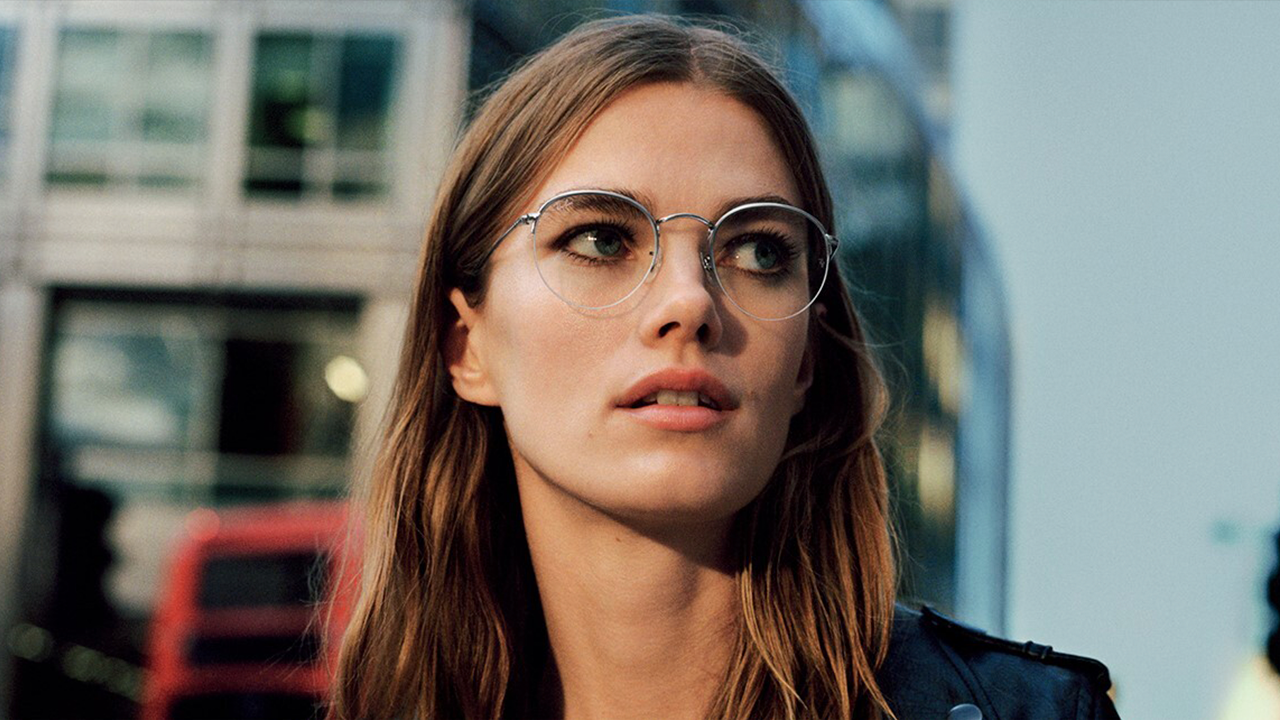
Ray-Ban Blue Light Glasses Featuring Ray-Ban Blue Lens Technology
Shop All Eyeglasses
Blue Light Sunglasses
For outdoor activities and sports, we carry blue light sunglasses that boast some of the most impressive blue-defense technologies available in the market. Whether you're needing extra protection from hours out on the water (another main source of harmful blue light), or simply want to protect your eyes during time spent outdoors, you're in good hands with any of the blue light sunglasses we offer.
Follow the links below and discover the lens technology available in our favorite blue light sunglasses.
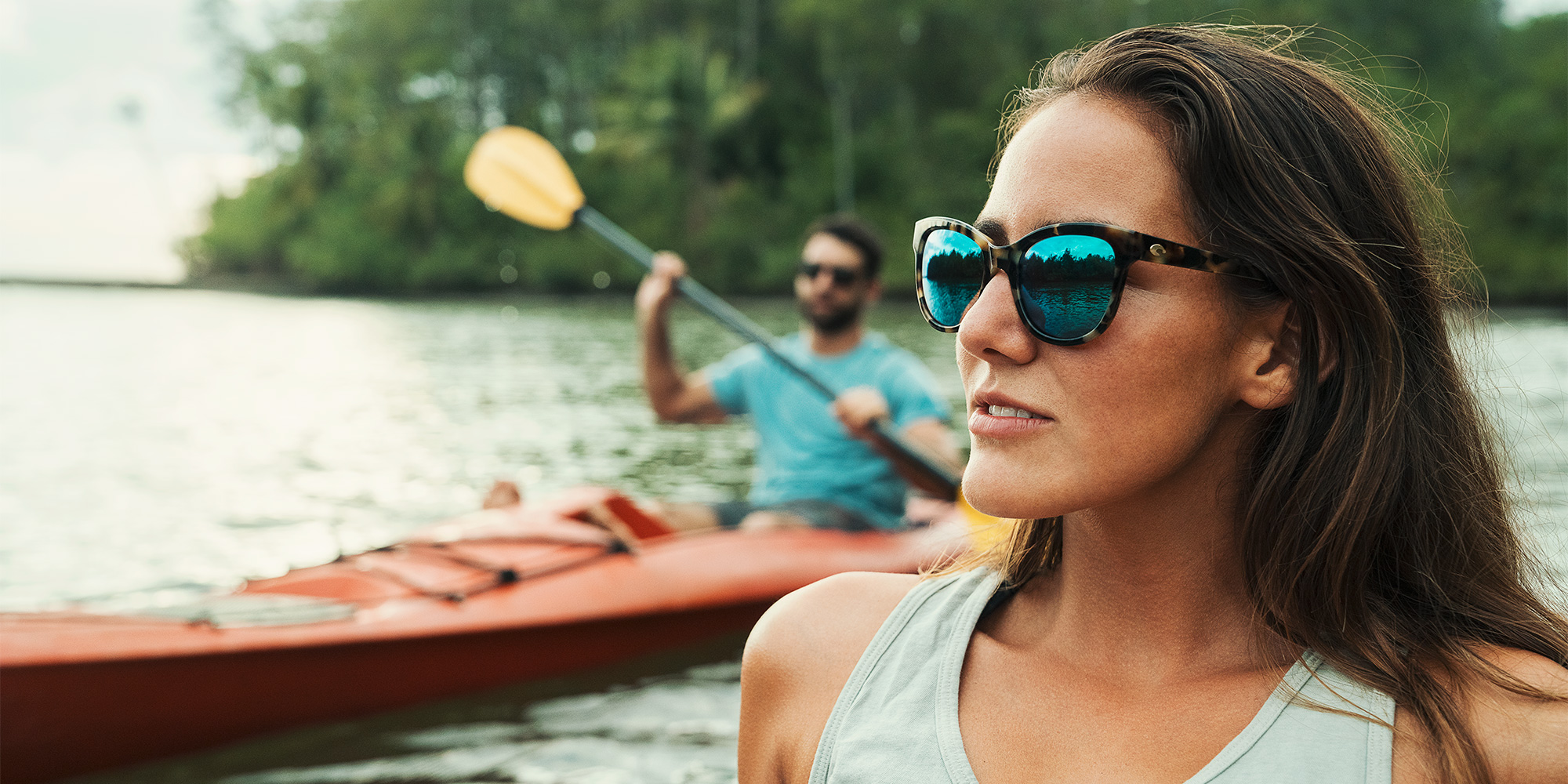
Costa Blue Light Blocking Sunglasses Featuring Costa 580 Lens Technology
Shop All Sunglasses
Prescription Blue Light Glasses & Sunglasses Online
Need prescription blue light glasses or sunglasses? Done. When you shop with SportRx, you’ll find video guides and tool tips throughout the build process as you customize the perfect pair. An answer to all your questions is at your fingertips, and if you want to chat with an expert, give us a call! We’ll put you in touch with one of our friendly in-house Sports Opticians who can help you build your blue light prescription glasses.
Ditch risky online shopping with the See Better Guarantee. Try your blue light glasses for 45 days. If you’re not 100% satisfied, send them back. Get a full refund, exchange, or credit towards a better pair. And return shipping? Covered. Get your blue light glasses at SportRx today!

